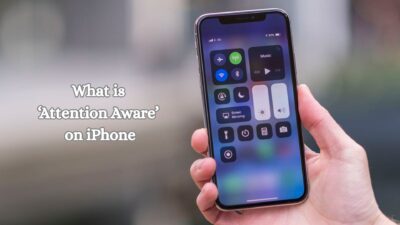Google Chrome is the world’s most used browser but it is not immune to periodic errors. You need to maintain and take care of your browser to ensure smooth functionality. Luckily, you can fix most of the issues related to your Chrome browser by yourself. Here’s how to fix the ERR_CACHE_MISS error.
If you have been using Google Chrome as your default browser for a while, chances are that you have seen this message – Confirm Form Resubmission ERR_CACHE_MISS, while browsing. Since you are here and reading this, it is safe to assume that you are currently dealing with this issue. Other variations of this message are “net::ERR_CACHE_MISS” and “NET ERR_CACHE_MISS”
This error message can appear for multiple reasons and halt your browsing experience. The common reasons why you may experience this are
- If your browser fails to access the cache files from the site you are trying to load
- If there are bugs, corruptions, or inefficiencies in your browser, browser settings, or extensions
- The site you are trying to visit has coding errors or PHP-related issues.
Unless it is caused by an issue from the website’s end, you can solve this issue, remove the error message and continue your browsing experience by following some simple steps. In the section that follows, we will discuss 7 proven methods of dealing with the ERR_CACHE_MISS error. Before that, let’s understand why exactly Chrome shows this message.
Why does the ERR_CACHE_MISS message appear?
This message usually appears when you refresh or reload chrome after typing in some information or submitting a form. It is actually a chrome function to stop the web browser from unintentionally duplicating the data entered into a web form. Had it not been for this message, you could have, for instance, made the same transaction twice on an e-commerce site.
So, how can you remove this message for good?
Method 1: Reload Chrome
The error may have been caused by an internet-related issue. Maybe you lost network connection for a few seconds while the page was loading. It can be resolved by simply reloading chrome.
On Windows, hit Ctrl + F5. On Mac, Command + Shift + R. Or, you can type chrome://restart into the URL bar and it will reload all the open tabs.
Method 2: Disable Extensions
Outdated extensions can often cause the ERR_CACHE_MISS error to occur. Here’s how you can find out if that is the case and resolve it.
Open a tab => Go to customize and control Google Chrome (the three vertical dots on the top right corner of your browser window) => More tools => Extensions => Disable all extensions by toggling the button off => Refresh your browser.
Once you have done that, re-enable the extension one by one and refresh the browser every time you toggle an extension on. If the browser shows the error message after enabling any extension, it indicates that the issue might be caused by that specific extension. You can hit the remove button beside it on the extensions page to remove it.
Method 3: Update Chrome
The issue might be caused because you are using an outdated version of Chrome. Usually, Chrome updates itself to the latest version when you re-open the browser after closing it. It also shows a sign on the top right corner of the browser window if an update is available. But if you are unsure whether you are using the latest version of Chrome, here’s what you can do.
Go to Customize and control Google Chrome => Settings => About Chrome
Once you do that, Chrome checks for any pending updates and installs the latest version.
Method 4: Clear browsing data
Your browser stores certain units of information in the caches to help sites load faster when you revisit them. If the files in browsing data are corrupt it may cause an error to occur. Here’s how to fix it.
Type chrome://history into your URL bar. Click on Clear browsing data. Select the time range from the pop-up. Select three boxes – browsing history, cookies and other site data, and cached images and files. Click on clear data.
Remember, this will cause some sites to load slower and you might be logged out of some sites.
Method 5: Reset DNS settings
Your operating system caches compressed information units about the websites you have visited. These are mostly DNS lookups that help the websites load a little faster. Chrome creates a separate DNS cache and outdated DNS caches can cause the internet connection to fluctuate. Here’s how you can fix it.
Open a tab => Enter chrome://net-internals/#dns in the URL bar => click on Clear host cache
This will flush Chrome’s DNS cache and hopefully fix the issue.
Method 6: Disable the cache system
If none of the 5 steps has worked for you, try this one. It will require you to access the Developer tools. But fear not, it’s as easy as it gets.
Go to Customize and control Google Chrome => More tools => Developer tools
Find the Network tab from the top bar and select it.
Click on Disable cache.
This will disable the caching system and prevent your browser from storing information in caches. Please note, that in order for this to work you need to keep the DevTools window open.
Finally: Reset Chrome Settings
If none of the six methods above has worked, you can try to reset Chrome settings.
Type chrome://settings/reset into the browser’s address bar. It will reset your browser to its original state. Some of the things that it will reset to default are
Default search engine, homepage and tabs, new tab page, tabs you have pinned, content settings, cookies and site data, extensions, and themes.




